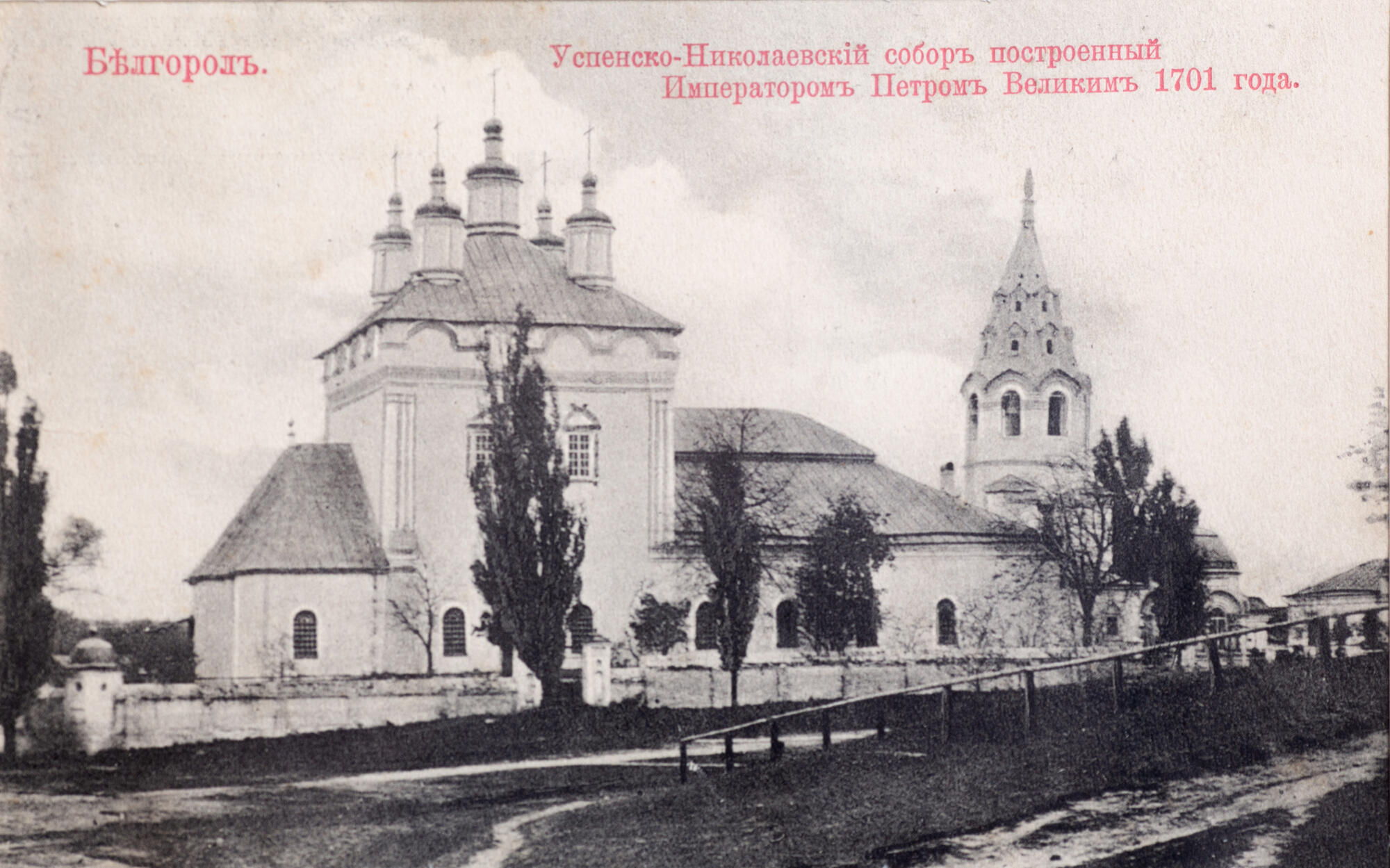At the beginning of the 18th century, the Assumption and Saint Nicholas Cathedral was erected in a soldier settlement in Belgorod. Now it is the oldest surviving stone temple in the city.
Ivan Fyodorovich Bashilov, the author of the “Description of the Kursk Viceroyalty”, wrote that construction began in 1692. The cathedral memorial tablet reads, “The cathedral was founded by Peter I in 1701.” The same year and even the exact day (June 15) are recorded in the clerical notes as the date when the emperor “granted a hundred rubles <…> for his imperial prayer”.
There is also no exact information as to when the construction ended. According to old inventories, Bashilov and Alexander Maksimovich Drenyakin, it happened in 1703, while recent researchers tend to name the year 1709.
According to legend, the builders were soldiers of the Belgorod garrison, headed by a certain Ivan Prokofiev.
The architecture of the cathedral is unique: “according to… the construction plan, it [the cathedral] is in many ways different from the new churches that were built in the present [19th] and past centuries” (from a note compiled together with the cathedral archpriest Vasily Ilyinsky).
Most of the contemporary churches feature the architectural traits of left-bank Ukraine, as well as the characteristics of religious buildings of Central and Northern Russia of the 17th century, more common among Yaroslavl architects.
This is a pillarless five-domed brick quadrangle with a hipped bell tower. The middle altar is dedicated to the Assumption of the Mother of God, the southern one — to Nicholas the Wonderworker, and the western one — to John the Baptist. The perron was intended for a special category of those who repent of grave sins.
Through the efforts of eminent donors, such as members of the imperial family, the church was equipped with silver utensils, a tin sacrarium, the Gospels and liturgical books with precious revetment, printed at the Moscow Print Yard.
Vladimir Dmitriyevich Mashukov, an officer and historian, in a note about the shrines of Belgorod drew attention to the gilded coat of arms placed above the Royal Gates — a symbol of Peter I’s regard.
After 1917, the cathedral was closed. It was later converted into a prison; in the second half of the 20th century, it was given to a bread factory.
Since 1986, the cathedral has been under state protection as a valuable architectural monument. In 1993, the Marfo-Mariinsky convent was established there; in 1998, the building was restored. The church has been holding services since 2005.
Ivan Fyodorovich Bashilov, the author of the “Description of the Kursk Viceroyalty”, wrote that construction began in 1692. The cathedral memorial tablet reads, “The cathedral was founded by Peter I in 1701.” The same year and even the exact day (June 15) are recorded in the clerical notes as the date when the emperor “granted a hundred rubles <…> for his imperial prayer”.
There is also no exact information as to when the construction ended. According to old inventories, Bashilov and Alexander Maksimovich Drenyakin, it happened in 1703, while recent researchers tend to name the year 1709.
According to legend, the builders were soldiers of the Belgorod garrison, headed by a certain Ivan Prokofiev.
The architecture of the cathedral is unique: “according to… the construction plan, it [the cathedral] is in many ways different from the new churches that were built in the present [19th] and past centuries” (from a note compiled together with the cathedral archpriest Vasily Ilyinsky).
Most of the contemporary churches feature the architectural traits of left-bank Ukraine, as well as the characteristics of religious buildings of Central and Northern Russia of the 17th century, more common among Yaroslavl architects.
This is a pillarless five-domed brick quadrangle with a hipped bell tower. The middle altar is dedicated to the Assumption of the Mother of God, the southern one — to Nicholas the Wonderworker, and the western one — to John the Baptist. The perron was intended for a special category of those who repent of grave sins.
Through the efforts of eminent donors, such as members of the imperial family, the church was equipped with silver utensils, a tin sacrarium, the Gospels and liturgical books with precious revetment, printed at the Moscow Print Yard.
Vladimir Dmitriyevich Mashukov, an officer and historian, in a note about the shrines of Belgorod drew attention to the gilded coat of arms placed above the Royal Gates — a symbol of Peter I’s regard.
After 1917, the cathedral was closed. It was later converted into a prison; in the second half of the 20th century, it was given to a bread factory.
Since 1986, the cathedral has been under state protection as a valuable architectural monument. In 1993, the Marfo-Mariinsky convent was established there; in 1998, the building was restored. The church has been holding services since 2005.



